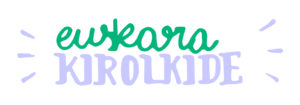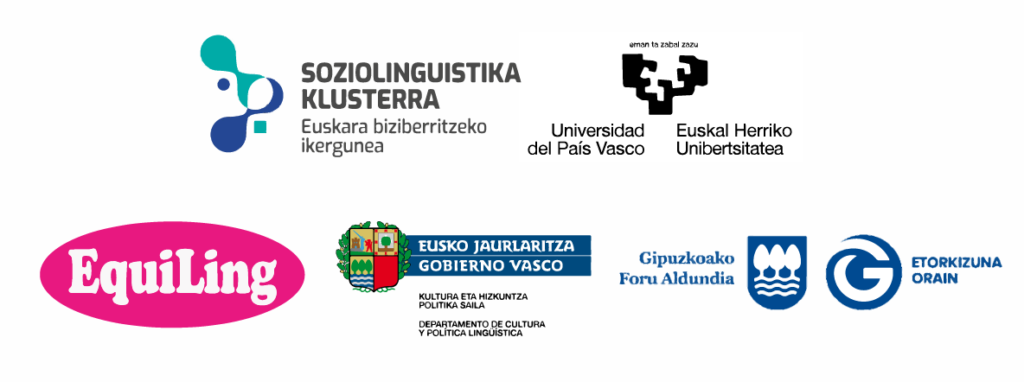Having established the basis of the project, we embarked on Euskara Kirolkide in 2020. The timescale for the project was three years. Its chronology is the following:
2020
- Theoretical framework
- Preparation for fieldwork
2021
- Fieldwork 4 steps:
- History, development and symbols of the club
2020
This was the year the project started up. To do this we set ourselves two tasks. Firstly, to create a theoretical framework for the project. In this respect, we reviewed the literature generated in recent years concerning the triad of youth, leisure and Basque in search of concepts, notions and ideas that might be useful for the Euskara Kirolkide project, and we put this information into an in-depth report. In this report we set out to incorporate ideas worked on in other contexts.
To read about the theoretical framework of the Euskara Kirolkide project, click here.
We also began to prepare the fieldwork to be done from 2021 onwards. The main task in this phase was to choose the sports clubs to take part in the project. This selection process involved the following steps: 1) defining the profiles of the clubs, 2) drawing up the list of candidate clubs, 3) consulting the clubs and presenting the project, and 4) drawing up the final list of clubs taking part. Thus, the clubs taking part were the following:

As part of the preparation, in November 2020 an interesting seminar was held with different agents from the world of sport, both public and private, where the conclusions of the D ereduko kirola project and the aims and approach of the Euskara Kirolkide project were presented and discussed.
To find out more about sports clubs, go to the Clubs taking part section.
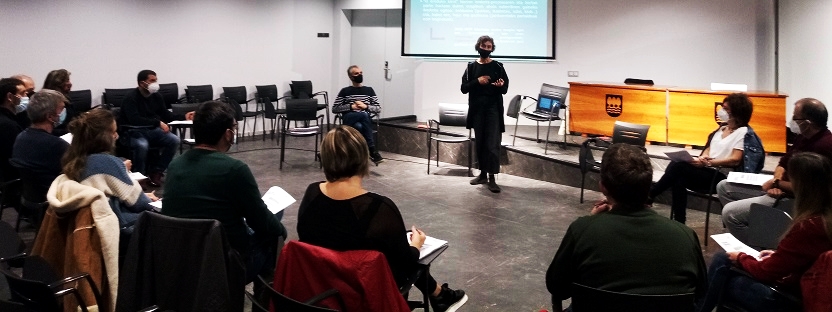
2021
Fieldwork began in 2021. The primary aim of the latter was to start trying out the theoretical definition of a safe space established in 2020 with agents in the sports clubs. Specifically, the aim was to find out about the everyday practices and experiences, feelings and thoughts of the management, staff and employees of the sports clubs.
To do this, four steps were defined and taking care to ensure coherence between them, the aims of each of these steps were defined and worked on in different ways.
FIRST STEP: History, development and symbols of the club
In this first step of the fieldwork, the focus was on the foundations of each club. By foundations we mean the origin, development and features of the club. We wanted to grasp the goals and desires that led to the club being set up, the essence of the club and its peculiarities. We analysed what the club consists of and “What makes it a club” (also what makes it “special” or gives it personality).
On this basis we wanted to see or identify the role language or languages have played and continue to play in this history, development and personality, in particular the role played by Basque in both past and present. We also wanted to predict the possible place of Basque in the future.
The article by Nicole Brown was taken as a point of reference.
With regard to the research procedure, in this first step observation exercises (identity box) and in-depth interviews were carried out.
STEP TWO: Getting to know and experiencing the club
This step considered the role of the club as environment and context. To make a comparison, if the club were a house we wanted to know the location and features of this house.
These “houses”, atmospheres and contexts are associated with practices, experiences and perceptions. And Basque, languages and communication in general form part of this context. We were therefore interested to see where, when and how people relate in Basque, languages and communication and the practices associated with them linked in with other facets and activities of the club.
The article by Sarah Pink and Kerstin Leder was taken as a point of reference.
With the aim of exploring these aspects, we contacted the people in charge of the clubs and requested guided tours to get to know better the “club house” and also its immediate context (neighbourhood, town, city or whatever).
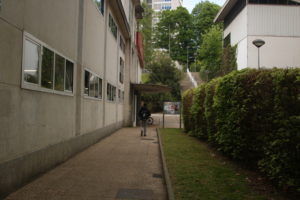

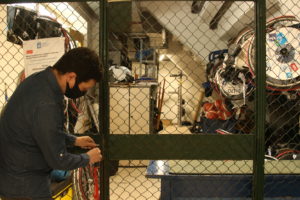
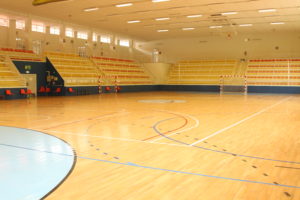
STEP THREE: The club, day to day. Practices, routines, relations and emotions
In this step we wanted to get to know the clubs’ everyday life: to see the club “working” and discover its practices, routines, relations and affections.
In the words of Sarah Pink and Kerstin Leder, to conduct ethnographic research into the everyday, one must be on the spot – and this is just what we did: “To research the everyday ethnographically we need to be ‘in there’ and part of the very flow of life that we are researching.” (Pink & Leder 2014, 146). As they stress, it is not the same to see for oneself the practices that go on (in the club) as to listen to descriptions by research subjects, because many things may go unsaid, involuntarily forgotten or ignored by the respondents (ibid, 147):
“areas of everyday life that are ‘hidden’, never usually spoken about and therefore under-acknowledged and under-researched.”
The article by Sarah Pink and Kerstin Leder was taken as a point of reference.
As well as recording what goes on in the clubs, we asked how and why it went on. Moreover, we looked into how all that goes on in the club is related to its personality and the way it sees sport. It is also interesting to observe the experiences, emotions (of those involved) and affective feelings associated with these practices. Finally, in this third step we had the chance to witness the use of the language or languages, seeing what place they occupy in the everyday activities of the club.
STEP FOUR: The club and communication. Internal and external communication
In this step, we set out to analyse the communicative dimension of the clubs. In this respect, we analysed the flow of information between the club (athletes/players, coaches, management and parents) and other followers (supporters and the general public).

This practice is important for clubs, even if it is not directly related to its sporting activities. These communicative practices allow the club to be “seen” (its personality, features, image, values, desires, needs and so on). Because ultimately, all of us when we communicate put much of ourselves into it (our personality, thought, wishes and so on) and we express a lot. The importance of communication is highly obvious, and must be seen as part of the club.
We analysed two levels or types of communication related to clubs’ activities: (1) internal communication between club members; (2) external communication aimed at the public and supporters in general. In this area, we also dealt with another interesting matter: merchandising and advertising.
